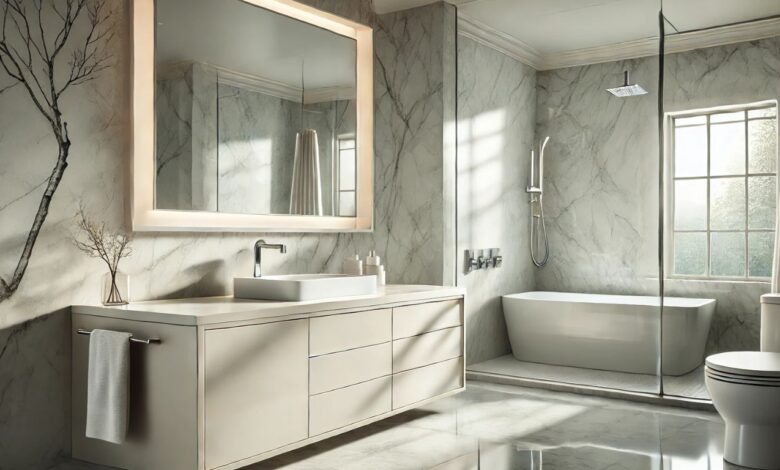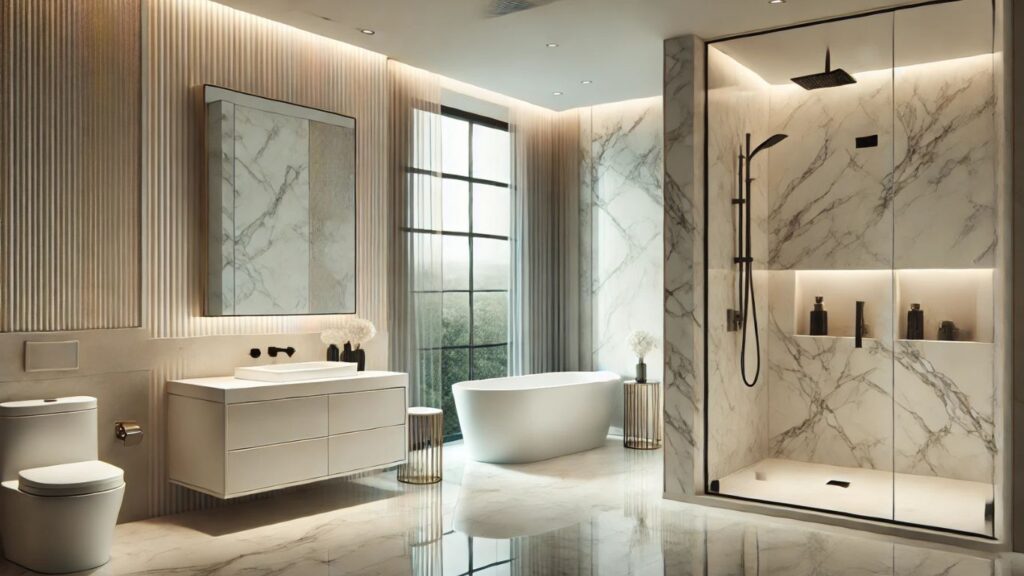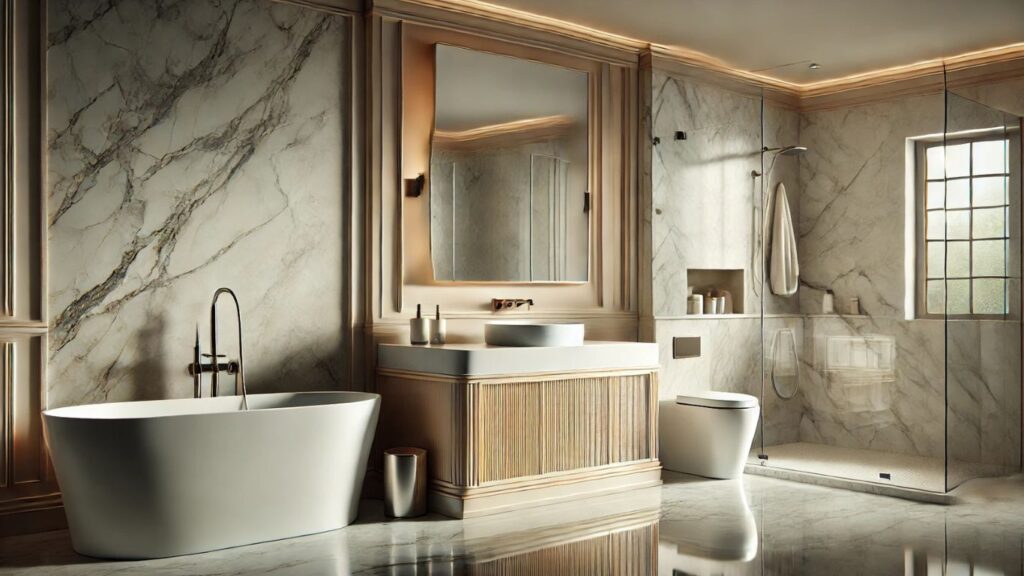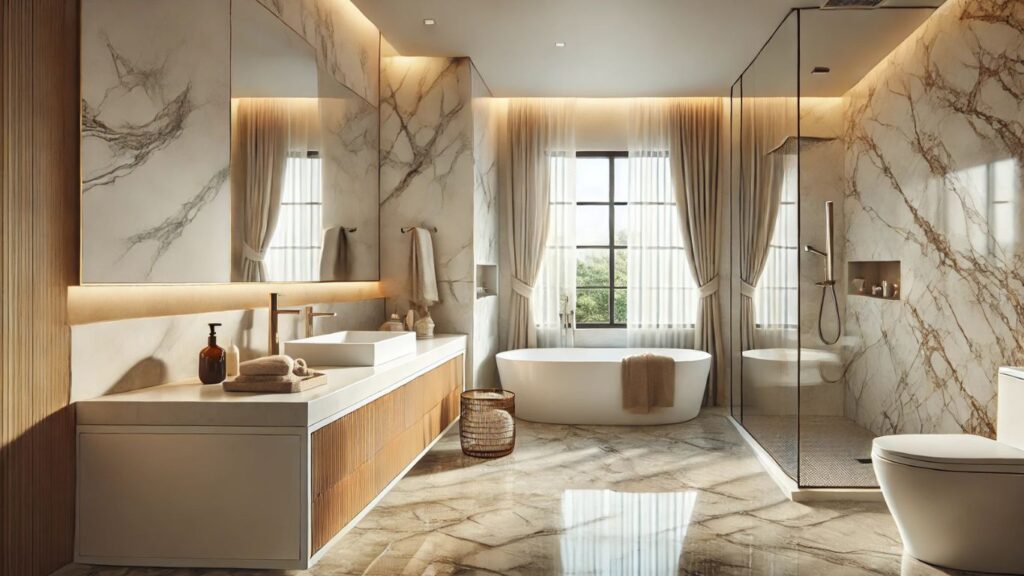The Ultimate Guide to What is Cultured Marble Benefits, Uses, and Care

What is a Cultured Marble?
Cultured marble is a term that has been gaining popularity in home design and renovation circles. If you’re considering a bathroom remodel or looking for a durable and stylish countertop, you may have come across this material. But what exactly is what is cultured marble, and why is it an excellent choice for modern homes?
In this comprehensive guide, we’ll explore everything you need to know about cultured marble, including its composition, benefits, uses, maintenance, and how it compares to natural marble and other materials. By the end, you’ll have all the information you need to decide whether cultured marble is the right option for your home improvement project.
Understanding Cultured Marble

What is Cultured Marble Made Of?
What is Cultured Marble is an engineered product made by blending crushed natural marble with resins and pigments. This mixture is then molded into various shapes and finished with a protective gel coating that enhances durability and resistance to stains, scratches, and moisture. Unlike natural marble, which is quarried in slabs, cultured marble is manufactured in a controlled environment, allowing for greater consistency in color and pattern.
The term “what is cultured marble” signifies that the material is man-made, yet it retains the elegance and luxurious appearance of natural stone. This makes cultured marble a popular choice for homeowners seeking both aesthetic appeal and practicality.
How is Cultured Marble Made?
The process of creating cultured marble involves several key steps:
- Crushing and Mixing: Natural marble is crushed into fine particles and combined with resins and pigments.
- Molding: The mixture is poured into molds to form countertops, sinks, bathtubs, shower walls, and other fixtures.
- Curing: The molds are left to cure and harden, ensuring the material gains its strength and durability.
- Finishing Touches: The hardened pieces are removed from the molds and polished with a gel coating that enhances their shine and provides protection against damage.
This controlled production process allows for customization in color, shape, and size, making cultured marble a versatile option for various applications.
Benefits of Cultured Marble
Cost-Effective Alternative to Natural Marble
Natural marble is stunning but expensive. Cultured marble provides the same elegant look at a fraction of the cost, making it a budget-friendly option without compromising on aesthetics.
Durability and Strength
Thanks to its resin composition and protective coating, cultured marble is resistant to chipping, cracking, and staining. It holds up well in high-moisture environments, making it an excellent choice for bathrooms and kitchens.
Low Maintenance
Unlike natural marble, which requires regular sealing to prevent stains and damage, cultured marble is nonporous and easy to clean. A simple wipe with a damp cloth and mild cleaner is usually sufficient to maintain its shine.
Customizable Designs
Cultured marble is available in a wide range of colors, patterns, and finishes. Homeowners can choose from solid colors, veined designs that mimic natural marble, or even custom hues to match their décor.
Seamless Installation
Since cultured marble is molded into specific shapes, it can be installed without grout lines, reducing maintenance and preventing the growth of mold and mildew.
Common Uses of Cultured Marble

Cultured marble is used in various applications throughout the home. Some of the most common uses include:
- Bathroom Vanity Tops: A popular choice for its sleek, seamless design and moisture resistance.
- Shower Walls and Surrounds: Provides a stylish, easy-to-clean surface without the need for grout.
- Bathtubs: Custom-made tubs offer luxury without the high cost of natural stone.
- Sinks and Basins: Integrated sinks provide a smooth, modern look.
- Kitchen Countertops: Though less common in kitchens, some homeowners opt for cultured marble due to its affordability and aesthetic appeal.
Cultured Marble vs. Natural Marble: Key Differences
While cultured marble and natural marble may look similar, there are key differences between the two materials:
- Composition: Cultured marble is made of marble dust, resin, and pigment, whereas natural marble is 100% natural stone.
- Porosity: Cultured marble is nonporous, whereas natural marble is porous and requires sealing.
- Maintenance: Cultured marble is low maintenance and easy to clean, whereas natural marble requires special cleaners and regular sealing.
- Durability: Cultured marble is resistant to stains and scratches, while natural marble is more prone to damage.
- Cost: Cultured marble is more affordable compared to natural marble.
- Customization: Cultured marble offers a wide range of colors and patterns, while natural marble is limited to its natural variations.
Caring for Cultured Marble

Maintaining cultured marble is easy and requires minimal effort. Here are some essential tips for keeping your surfaces looking their best:
Regular Cleaning
Use a non-abrasive cleaner and a soft cloth to wipe down the surface regularly. This will prevent dirt and grime buildup while preserving the material’s shine.
Avoid Harsh Chemicals
Strong acids or abrasive scrubbing pads can damage the protective gel coating. Stick to gentle cleaning solutions to extend the life of your cultured marble.
Prevent Scratches
While cultured marble is durable, using cutting boards and avoiding heavy impacts can help prolong its lifespan. Be mindful of placing sharp or rough objects directly on the surface.
Polishing
Occasionally polishing cultured marble with a specialized product can restore its shine and keep it looking brand new.
Frequently Asked Questions (FAQs)
Is cultured marble real marble?
No, cultured marble is a man-made product composed of marble dust, resins, and pigments. It mimics the appearance of natural marble but has different properties.
Does cultured marble scratch easily?
Cultured marble is more scratch-resistant than natural marble, but it can still get scratched if exposed to sharp or abrasive objects.
How long does cultured marble last?
With proper care, cultured marble can last for decades, making it a durable choice for bathrooms and kitchens.
Can you repair cultured marble?
Yes, minor scratches and dull spots on cultured marble can often be buffed out, and professional repair kits are available for larger damages.
Is cultured marble water-resistant?
Yes, cultured marble is nonporous, making it highly resistant to water and moisture damage.
Can I install cultured marble myself?
While some homeowners opt for DIY installation, professional installation is recommended to ensure a perfect fit and finish.
Conclusion
Cultured marble is a versatile and attractive material that provides homeowners with a budget-friendly alternative to natural stone. Its durability, easy maintenance, and customizable designs make it an ideal choice for various applications, especially in bathrooms and kitchens. By understanding its benefits and maintenance requirements, you can make an informed decision and enjoy the beauty and practicality of cultured marble in your home.
With the right choice, your home can achieve a luxurious feel without the hefty price tag, making cultured marble a smart investment for both aesthetics and functionality.
FOR MORE VISIT Dailynewsbizz.com




